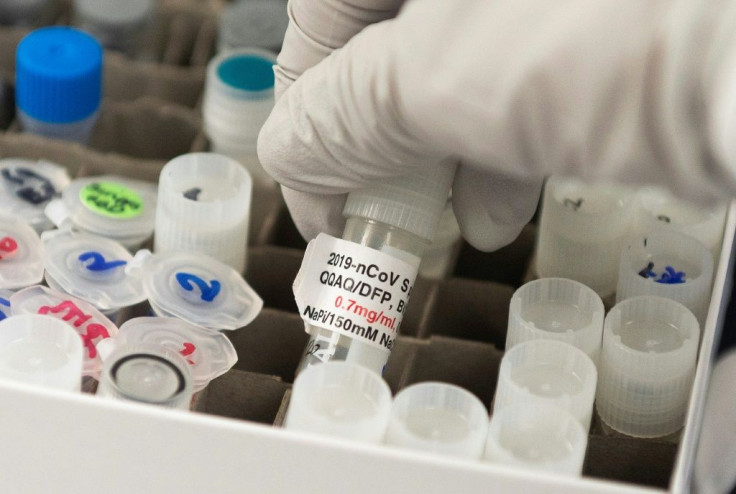Coronavirus Treatment: The Next Great Cure Might Be Hiding In Your Medicine Cabinet

KEY POINTS
- The launch of new trials for this drug provides hope that a treatment for COVID-19 -- and a host of other serious diseases -- might already be sitting behind your local pharmacist's counter
- More recently, scientists have found that several colon-cancer drugs can drastically slow the progress of macular degeneration -- an eye condition that gradually leads to blindness
- The potential for discovering new indications for already-approved drugs remains mostly untapped.
In the race against COVID-19, biopharmaceutical firms Regeneron and Sanofi have launched clinical trials to evaluate the efficacy of their drug, Kevzara, in treating the virus' life-threatening immune complications.
Interestingly, Kevzara isn't new; it was initially approved by the FDA in 2017 as an anti-inflammatory treatment for rheumatoid arthritis.
The launch of new trials for this drug provides hope that a treatment for COVID-19 -- and a host of other serious diseases -- might already be sitting behind your local pharmacist's counter. But discovering fresh ways to utilize existing drugs requires policies that encourage researchers to look for them in the first place.
The effort to repurpose Kevzara is hardly an isolated incident. Scientists have been discovering new uses for old medicines for decades. These new uses are what researchers call a new "indication."
Take thioguanine, a drug created 70 years ago to treat leukemia. In 2001, it was repurposed to help patients with inflammatory bowel disease, a condition which impacts some 1.6 million Americans.
More recently, scientists have found that several colon-cancer drugs can drastically slow the progress of macular degeneration -- an eye condition that gradually leads to blindness. Close to 11 million Americans suffer from macular degeneration. About half of all patients treated with the new indication can see well enough to drive after five years.
Moreover, Harvard Medical School researchers are exploring the use of a common vaccine for tuberculosis in treating type 1 diabetes, an affliction with which 1.25 million U.S. residents live.
These examples notwithstanding, the potential for discovering new indications for already-approved drugs remains mostly untapped. The FDA has approved more than 20,000 prescription drug products for marketing. Any one of these compounds could have powerful new therapeutic applications -- but we'll only find out if researchers actively look for them.
Thankfully, if these new indications are out there, there's a high likelihood that U.S. biopharmaceutical researchers will find them. That's because America's robust intellectual-property laws reward innovators who invest the time and resources needed to discover whether drugs can be put to new uses.
Right now, drug makers that find a new application for an existing drug can secure a "method-of-use" patent. This new patent recognizes that the indication is completely new and the company may have exclusive rights to sell the drug for that additional use once it secures FDA approval.
In this way, method-of-use patents create a financial incentive for drug companies to spend hundreds of millions of dollars exploring new indications. Without the ability to patent new methods of use, this follow-on drug development would be a money-losing endeavor.
Unfortunately, method-of-use patents are under scrutiny from some lawmakers in Washington. They claim that drug firms use these IP protections to "game" the system and force patients to pay more for new therapies.
Such assertions fail to take into account that method-of-use patents protect only the new use of the drug, not the drug itself. Imagine a migraine medicine goes off-patent, and a firm then discovers the medicine can treat chronic back pain too.
Generic drug companies would still be able to create cheap copies of the medicine for migraine sufferers, even if the original manufacturer gets a follow-on patent for back-pain patients. The law and FDA rules specifically permit generic companies to carve the newer indication out of their labels.
More importantly, patients benefit from method-of-use patents. Without these IP protections, some of the greatest examples of drug repurposing would have never been possible. That includes AZT -- the very first drug approved for AIDS. The medicine, created in the 1960s, was originally intended for cancer patients.
Years later, when researchers discovered AZT's potential for treating AIDS, the drug firm Burroughs-Wellcome secured a follow-on patent, enabling the company to invest the time and money required to turn AZT into an FDA-approved drug for AIDS.
The next breakthrough cure might not be an entirely new compound, but a drug that's already in medicine cabinets across the country. But we need robust IP protections to help these novel indications come to fruition.
Christopher Holman is a professor at the University of Missouri-Kansas City School of Law, where his primary research focus lies at the intersection of intellectual property and biotechnology. He also serves as a senior scholar at the Center for the Protection of Intellectual Property at the Antonin Scalia Law School at George Mason University.
© Copyright IBTimes 2025. All rights reserved.



















